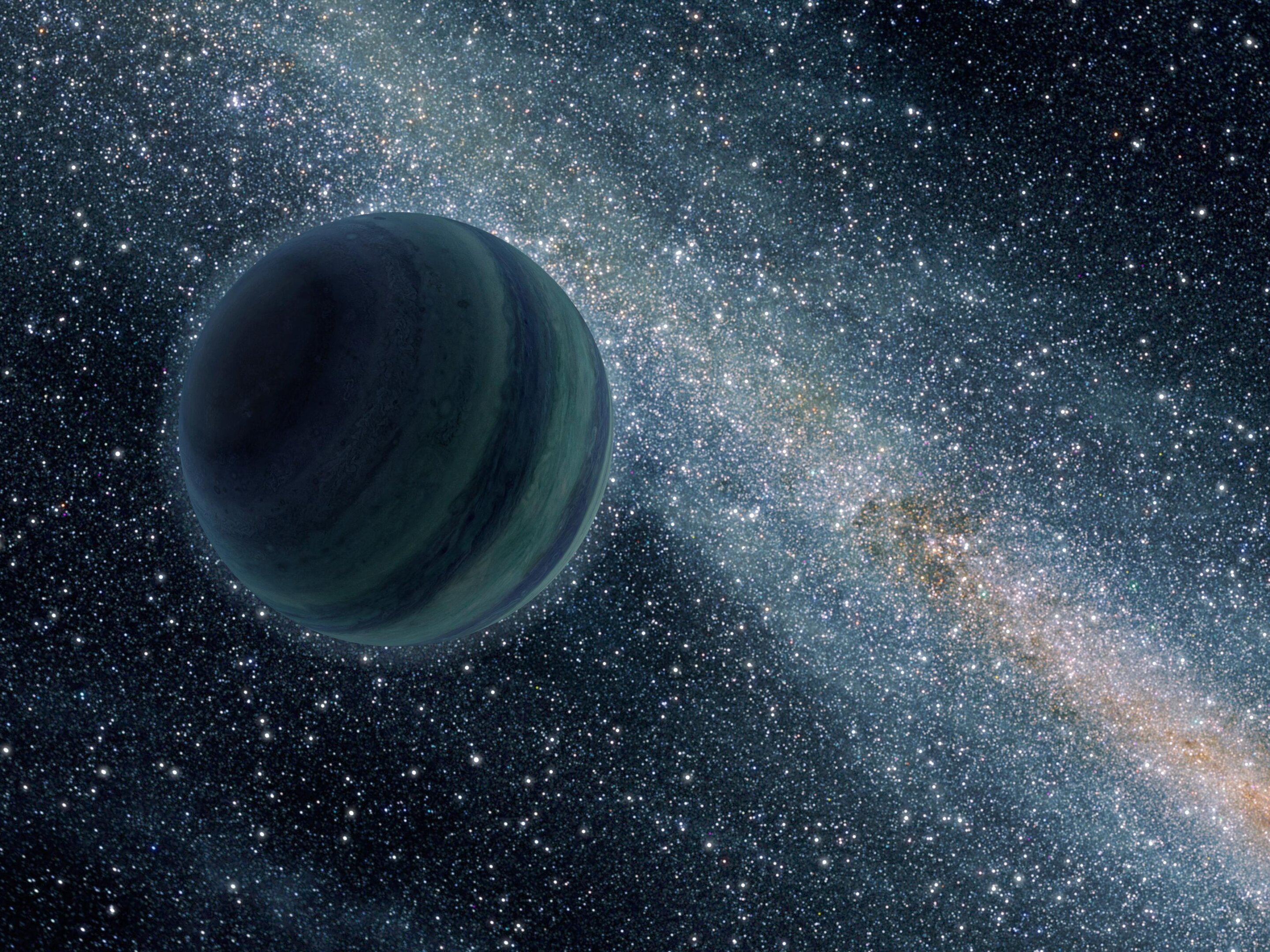NASA to Use Artificial Intelligence to Discover Rogue Exoplanets Wandering the Galaxy – Newsweek
Researchers have developed a new method to detect rogue planets outside the solar system, worlds that wander their galaxies alone without a parent star.
The technique, devised by NASA Goddard Space Flight Center scientist, Richard K. Barry, unites astronomy’s future—in the form of the soon-to-launch Nancy Grace Roman Space Telescope—with its past, a method used by 19th-century astronomers to measure distances.
The Contemporaneous LEnsing Parallax and Autonomous TRansient Assay (CLEoPATRA) mission will use parallax to measure distances, but the method will be bolstered by artificial intelligence (AI) developed by Dr. Greg Olmschenk.
Olmschenk’s program, RApid Machine learnEd Triage (RAMjET), will learn patterns through provided examples filtering out useless information and ensuring that of the millions of stars observed by CLEoPATRA per hour, only useful information is transmitted back to Earth.
Recent research published in The Astronomical Journal suggests that exoplanets that exist in the Universe without a parent star could be more common than stars themselves, but until now spotting them has been difficult.
“The difficulty with detecting rogue planets is that they emit essentially no light. Since detecting light from an object is the main tool astronomers use to find objects, rogue planets have been elusive,” the author of that paper and Thomas Jefferson professor for Discovery and Space Exploration at Ohio State University, Scott Gaudi, told Newsweek.
The most powerful method of spotting exoplanets—planets outside the solar system—is through the dips in light they cause as they pass in front of their parent stars. This transit method has resulted in the discovery of thousands of worlds added to the exoplanet catalog, but it doesn’t work for planets that don’t have host stars.
One way to spot rogue exoplanets is to wait until they cross between a distant Milky Way star and our telescopes here on Earth intercepting the light from that star. When this happens, a phenomenon called gravitational lensing, the bending of light caused by a massive object, actually causes the light from that star to brighten.
CLEoPATRA will exploit this brightening, which is called microlensing when it involves a lensing object of small mass like a planet, and use parallax to measure the distance to these rogue worlds.
“Roman [Space Telescope] will use a technique called gravitational microlensing to find rogue planets, which relies only on the gravity and thus the mass of the planet, and doesn’t require detecting any light from the planet,” Gaudi said
As microlensing events are both unpredictable and exceedingly rare, a telescope must monitor hundreds of millions of stars nearly continuously to spot them. And that takes a wide-field space telescope like Nancy Grace Roman Space Telescope.
Parallax is the apparent shift in the position of an object when it is observed from different positions. The most familiar example of this is holding a finger close to our face and looking at it with one eye, and then switching to the other. The finger will look like it has moved.
Astronomers in the 19th century used this phenomenon to measure the distances to close stars by observing how their positions shifted according to the background of more distant stellar objects.
Using parallax in conjunction with microlensing events works slightly differently, with separated observers relying on precisely synchronized clocks to measure the differences in time between their observations of the event. This time delay then allows observers to calculate the distance to the lensing exoplanet as well as its mass and size.
“CLEoPATRA would be at a great distance from the principal observatory, either Roman or a telescope on Earth,” Barry said in a NASA press release. “The parallax signal should then permit us to calculate quite precise masses for these objects, thereby increasing scientific return.”
The benefit in spotting rogue exoplanets isn’t just increasing the already burgeoning exoplanet catalog. Exploring these worlds could also teach us more about how the planets in our solar system, including Earth, formed and evolved.
“We want to find multiple free-floating planets and try to obtain information about their masses, so we can understand what is common or not common at all,” research assistant at Goddard and Ph.D. student at the Catholic University of America in Washington, Stela Ishitani Silva, said. “Obtaining the mass is important to understanding their planetary development.”
If all goes according to plan, CLEoPATRA will launch on a Mars mission around the same time as the launch of the Nancy Grace Roman Space Telescope currently set for the mid-2020s.
“CLEoPATRA will permit us to estimate many high-precision masses for new planets detected by Roman and PRIME,” said Barry. “And it may allow us to capture or estimate the actual mass of a free-floating planet for the first time—never been done before. So cool, and so exciting. Really, it’s a new golden age for astronomy right now, and I’m just very excited about it.”





